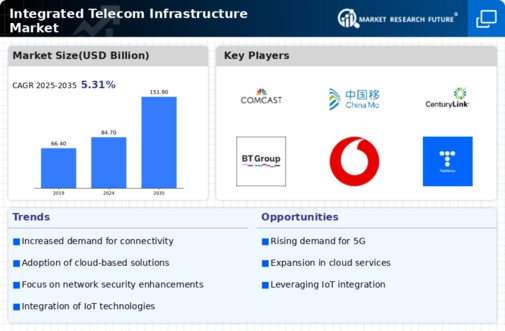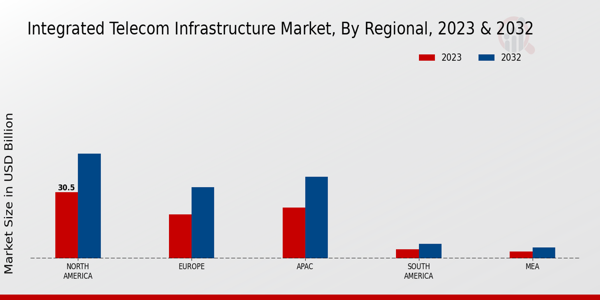The Integrated Telecom Infrastructure Market has experienced significant growth and transformation in recent years, driven by advancements in technology, increased demand for connectivity, and the expansion of digital services. This market encompasses a wide range of services, including data transmission, voice communication, and multimedia delivery, highlighting the importance of robust infrastructure in supporting these offerings. As companies strive to maintain a competitive edge, the integration of various services and technologies has become pivotal.
Key players in this space are constantly innovating and upgrading their telecom infrastructure to enhance service quality, expand coverage, and meet the evolving needs of consumers and businesses alike. The increasing reliance on cloud services, IoT solutions, and 5G technology further accentuates the competitive landscape, prompting companies to adapt and invest strategically in their infrastructure capabilities.TMobile US has established a prominent presence in the Integrated Telecom Infrastructure Market through its extensive investments in cutting-edge technology and infrastructure development.
The company’s focus on enhancing network capacity and performance has positioned it as a leader in the telecom sector, enabling it to deliver high-speed connectivity and comprehensive service offerings. With a commitment to customer satisfaction, TMobile US has deployed advanced network solutions, including 5G technology, which allows it to meet the growing demand for data-intensive applications and services. Its strong brand reputation and innovative service packages resonate well with consumers, reinforcing its competitive advantage.
The company actively seeks to expand its market share by pursuing strategic partnerships and collaborations, further solidifying its role in the global landscape of integrated telecom infrastructure.Comcast has carved out a significant position within the Integrated Telecom Infrastructure Market by leveraging its robust cable infrastructure and extensive broadband services. The company is recognized for its commitment to delivering high-quality internet, TV, and phone services to both residential and business customers, underlining its diversified service portfolio. Comcast's aggressive investment in fiber optic technology and network expansion initiatives represents a strategic advantage in enhancing service quality and customer reach.
The company's dedication to innovation and seamless user experience reflects its understanding of market trends and consumer needs. By continuously upgrading its offerings and exploring new revenue streams, Comcast remains a formidable player in the integrated telecom infrastructure sector, adapting to the dynamic landscape and maintaining a strong competitive edge against other industry participants.



















Leave a Comment